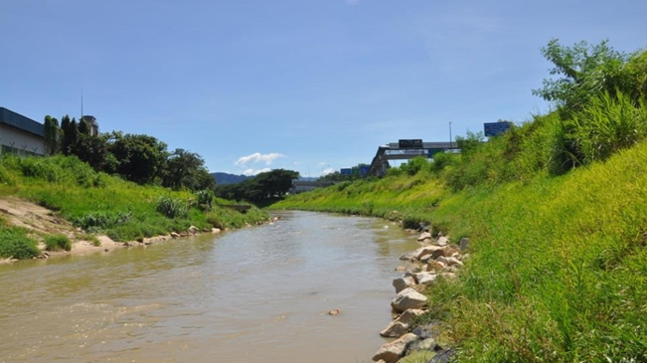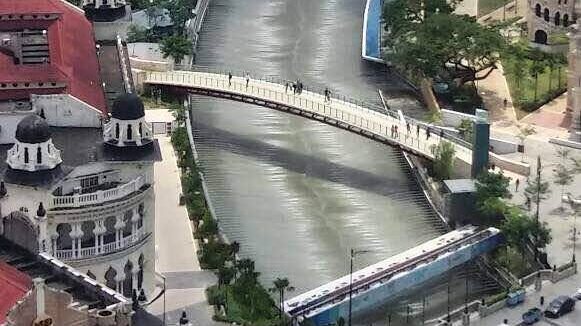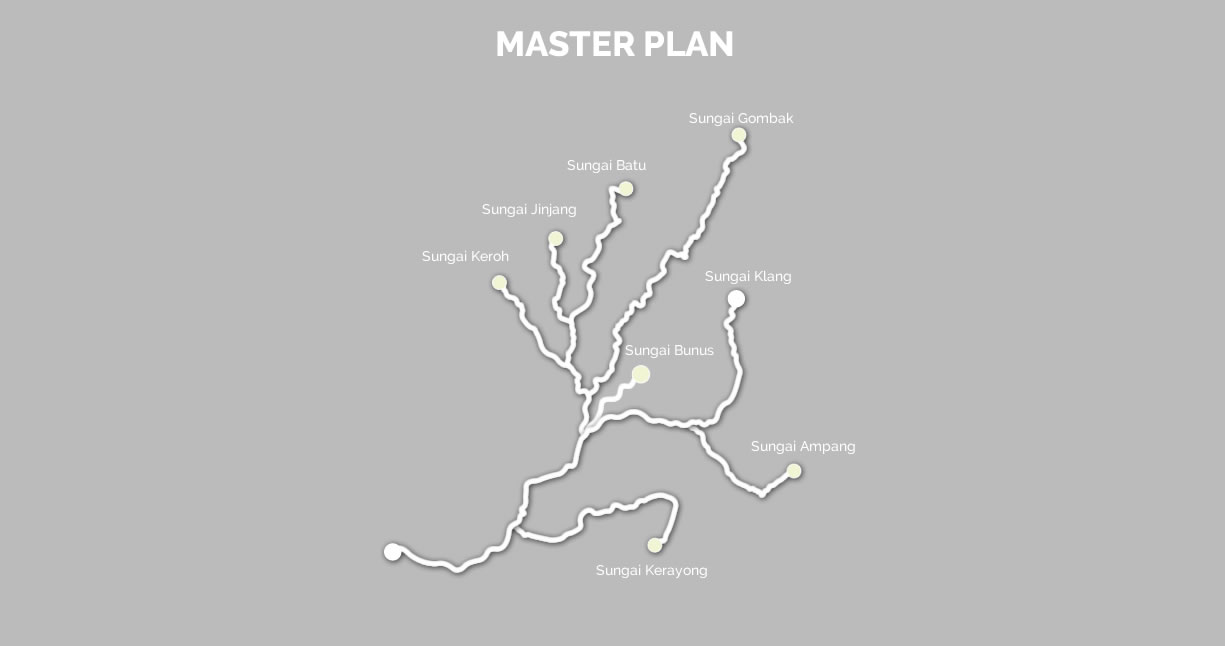Search
Search
The Klang riverfront is the most prominent yet under-utilised natural asset within Greater Kuala Lumpur / Klang Valley. The Klang River has all the elements to become an iconic riverfront and an integral part of the people’s daily life. Revitalization of this riverfront will elevate Kuala Lumpur in the ranks of the world’s major cities with active and clean waterfronts. Hence, the River of Life Entry Point Project was identified in the Greater Kuala Lumpur / Klang Valley National Key Economic Area under the Economic Transformation Programme.
This Entry Point Project aims to transform the Klang River into an active and liveable riverfront with high economic value. Under the River of Life project:
The Klang River winds through most densely populated area. In the wake of rapid development, the river became increasingly polluted and experienced intensified flooding during storm seasons. To Reconnect the city, river & people, ROL project was launched in 2011. The RM 4.4 billion ROL project covers a total area of 781 hectares & 63 hectares water bodies. The ROL sets to bring the community ‘back’ to the river through 100% transformation into a vibrant waterfront, high economic & commercial value to the surrounding urban fabric.

Completed: 96.95%
Schedule: 97.26% Late:-1.31%
NKEA Greater KL/KV for the Economic Transformation Program (ETP) was launched.
The ROL project was launched in July 2011. Project Delivery Partner (PDP) has been appointed to coordinate the ROL project for 3 years.
Financial Monitoring of the ROL Project by the Ministry of Federal Territory (JWP)
The role of the PDP ends on Jan 3, 2015 and the Delivery Management Office (DMO) has begun to take over the ROL project implementation monitoring tasks to date.
Launched on August 28, 2017. MJM Land Development on July 19, 2017.
Water Quality Index along the Klang River 10.7 km reached Class II


Improving the level of river water quality by 2024 along 110km involving 8 major rivers with an estimated project cost of RM 3.36 Billion which includes the construction of regional sewage treatment plants, sewerage pipes, wastewater treatment plants (sullage), Communal grease trap, gross pollutant trap/ log boom/trash rack. Main Agency - Department of Irrigation and Drainage.
Read More
The aim of this work to rejuvenate the banks of the Klang and Gombak Rivers, as well as increase the economic competitiveness of the area. Starting at Taman Tasik Titiwangsa in the north to Mid Valley in the south, the project covers an area of 10.7 km in Sungai Klang and Sungai Gombak to support recreational activities such as walking, jogging, cycling and picnicking. Main Agency - City Hall Kuala Lumpur
Read More
To increase property values along the Gombak and Klang river corridors along 10.7 km. Main Agency - City Hall Kuala Lumpur

The Master Plan celebrates the river as a connector that stitches together the various neighbourhoods it traverses. Currently, the project area is characterised by long stretches of inaccessible, underutilised and unsafe stretches that create a barrier in the minds of people. Proposed initiatives address this by overcoming infrastructural barriers and improving accessibility within the project site, thus connecting key destinations within it. In addition, the project will inject gathering spaces that will unite communities along the river and provide opportunities to celebrate the river’s historic, functional and symbolic legacy.

The Master Plan will create gathering spaces that will serve as focal points of the city. These nodes will be recognised for their inclusivity, respect and sensitivity to the various cultural and religious communities that live within the project area. River of Life will also support communities at the local level and ensure that people who live, work and play along the river feel that it is an integral part of their identity. The project will also play host to visitors from the rest of Greater Kuala Lumpur while gaining prominence as an international destination. Eventually, the project will raise the profile of Kuala Lumpur City in addition to serving as a benchmark for how waterfront regeneration can transform a city.

The Master Plan will create gathering spaces that will serve as focal points of the city. These nodes will be recognised for their inclusivity, respect and sensitivity to the various cultural and religious communities that live within the project area. River of Life will also support communities at the local level and ensure that people who live, work and play along the river feel that it is an integral part of their identity. The project will also play host to visitors from the rest of Greater Kuala Lumpur while gaining prominence as an international destination. Eventually, the project will raise the profile of Kuala Lumpur City in addition to serving as a benchmark for how waterfront regeneration can transform a city.

River of Life is focused on creating a safe and delightful public environment for recreation, gathering and resting. Well-designed landscapes incorporating water touching experiences as well as night-themed activities will maximise interaction with the river and riverside. By investing in cleanliness and river beautification, the Master Plan will encourage community stakeholders to take ownership of their river thereby creating a gracious and caring riverside community.

The River of Life Entry Point Project (EPP) aims to transform the Klang and Gombak rivers into a waterfront with high economic value by the year 2020. It is geared towards optimising the economic value of the river, and consequently developments along it. An active riverfront will attract locals and visitors alike. This will in turn spur confidence and promote business activity. Increasing the economic value of the riverfront will not only be through the sale of high-value commercial and mixed-use plots, but also through the provision of high quality residential options at desirable riverfront locations.

Historically, water was the primary lifeline for the nascent tin mining industry, rubber and palm plantations in Kuala Lumpur. The city grew and flourished around these promising economic prospects. Various demographic clusters emerged, giving rise to a melting pot of multi-cultural communities. Today, Chinatown and Little India are two recognisable neighbourhoods along the river, each with its own unique character. In addition, numerous mosques, churches, temples and historic buildings along the river strengthen its cultural identity as the heritage heart of the city. The Master Plan aims to bring people to these landmarks by highlighting their presence along the river and creating heritage trails that enable easy access.

One of the aims of River of Life is to restore and maintain the natural richness of the River’s ecology. The use of Water Sensitive Urban Design (WSUD)is integral to creating new habitats for native floraand fauna. The proposed Master Plan will nurture the forest back into the urban fabric of the city, enhancing green corridors perpendicular to the rivers and creating riparian vegetative buffers along the riverside. In addition, the initiatives outlined in the master plan will aid in flood mitigation.

The River of Life project will leave an environmental and social legacy that brings future generations closer to the river by emphasising the importance of environmental and water management. In the long-term, education is of utmost importance in sustaining the environmental vision of River of Life. Several living classrooms for outdoor learning will educate the public on environmental issues and nurture future champions of the river.
